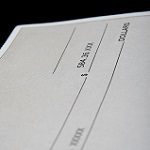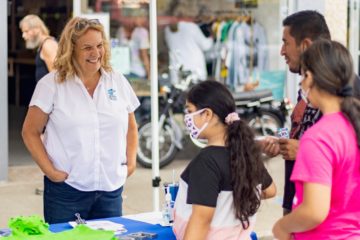Loan Resources
SBA Economic Disaster Injury Loans

updated April 20, 2021
Targeted EIDL Advance
The COVID-19 Targeted EIDL Advance was signed into law on December 27, 2020, as part of the Economic Aid to Hard-Hit Small Businesses, Non-Profits, and Venues Act. The Targeted EIDL Advance provides businesses in low-income communities with additional funds to ensure small business continuity, adaptation, and resiliency.
Advance funds of up to $10,000 will be available to applicants in low-income communities who previously received an EIDL Advance for less than $10,000, or those who applied but received no funds due to lack of available program funding. SBA is reaching out to those who qualify. Please do not submit duplicate COVID-19 EIDL applications. Only prior applicants will be considered for the Targeted EIDL Advance.
Effective immediately, applicants can send a request for reevaluation of a Targeted EIDL Advance application that was declined to the following email address: TargetedAdvanceReevaluation@sba.gov.
Applicants should follow these instructions when requesting a reevaluation:
- Send an email to TargetedAdvanceReevaluation@sba.gov
- Use the subject line “Reevaluation Request for [insert your 10-digit application number]”
- In the body of the email, include identifying information for the application such as application number, business name, business address, business owner name(s) and phone number
- Important: Include an explanation and any documentation that addresses the reason for the decline, if available. SBA will contact applicants if additional documentation is required to complete the review.
SBA first reached out to EIDL applicants who already received a partial EIDL Advance (between $1,000 – $9,000). Applicants are being contacted directly by SBA via email with instructions to determine eligibility and submit documentation.
Next, those who applied for EIDL assistance on or before December 27, 2020, but did not receive an EIDL Advance due to lack of program funding will be contacted. These applicants will receive an email from SBA with instructions to determine eligibility and submit documentation.
Applicants may qualify if they:
- Are in a low-income community. To help applicants determine if they are in a low-income community as defined in section 45D(e) of the Internal Revenue Code, a mapping tool is available at https://sbaeidl.policymap.com/app. The business address must be in a low-income community to qualify so SBA encourages potential applicants to check the map to see if they meet the low-income community eligibility requirement before they apply; and
- Can demonstrate more than 30% reduction in revenue during an eight-week period beginning on March 2, 2020, or later. If an applicant meets the low-income community criteria, they will be asked to provide gross monthly revenue (all forms of combined monthly earnings received, such as profits or salaries) to confirm the 30% reduction.
- Have 300 or fewer employees. Business entities normally eligible for the EIDL program are eligible, including sole proprietors, independent contractors, and private, nonprofit organizations. Agricultural enterprises are not eligible.
Paycheck Protection Program (PPP)

The Paycheck Protection Program was available for small businesses; generally up to 500 employees, but up to 1,500 employees (depending). 501 (c)(3) nonprofits, sole proprietors, the self-employed, and independent contractors are also eligible.
Paycheck Protection Program Act extends application date through May 31.
1. PPP Eligibility is Expanded to prioritize the smallest of small businesses.
The Biden-Harris Administration and SBA announced the agency has eliminated restrictions to businesses with owners who have prior non-financial fraud felony convictions. The SBA has also eliminated the restriction on businesses owned or controlled by owners who have federal student loan debt that is currently delinquent or has defaulted.
2. There’s a new calculation for sole proprietors, independent contractors, and self-employed individuals.
New PPP application forms are now available that allow Schedule C filers to use gross income rather than net income when calculating the PPP loan amount. These revisions are not retroactive. Visit www.sba.gov/ppp or talk to your lender for more details.
3. Use of Individual Taxpayer Identification Number (ITIN) is clarified.
All lawful U.S. residents have access to the PPP. Last week’s announcement clarifies that ITINs are permitted as the identifier for a business owned by a sole proprietor and for a principal. ITINs are issued by the IRS.
4. A 14-day exclusive PPP loan application period for businesses and nonprofits open February 24 – March 9.
This exclusive PPP loan application period is for businesses and nonprofits with fewer than 20 employees. The SBA will continue to accept PPP applications for all eligible borrowers until May 31, 2021 or until appropriated funding is exhausted.
The Paycheck Protection Program checklist:
Download the application.
Click here for First Draw PPP loan application
Click here for Second Draw PPP loan application.
Gather all required and supporting documents. These may include:
2019 tax return – Up-to-date 2019 and 2020 business Profit and Loss statements – bank account statements – third party payroll records – W2/W3 forms and tax forms such as 941 – tax payment receipts, cancelled checks or account statements.
Determine your highest average monthly payroll from either calendar year 2019 or 2020 or the last 12-months prior to the loan application. Gather transfers, ACH, checks, State wage reporting documents for L&I and unemployment, and for employer portions of health insurance and retirement plans.
Make an appointment with your financial institution to review and submit your application. For help finding a PPP lender, please click here to visit SBA’s Lender Match tool. If you have received a PPP loan and are seeking guidance on forgiveness, please click here.
Required no personal guarantee or collateral. The lender defers fees, principal, and interest for 6-12 months. Generally, business qualify for 2.5 months of payroll costs. The loan will be forgiven if it is used for payroll costs, interest payments on mortgages, rent payments, and utility payments between February 15 and June 30, 2020. Go to sba.gov to see local assistance.
Paycheck Protection Program (PPP) Loan Forgiveness
Loan forgiveness will be reduced if the borrower reduces employment by more than 25%. Relaxed loan forgiveness rules were finalized under the PPP Flexibility Act.
EZ Loan Forgiveness application
The EZ application requires fewer calculations and less documentation for eligible borrowers that:
- Are self-employed and have no employees; OR
- Did not reduce the salaries or wages of their employees by more than 25%, and did not reduce the number or hours of their employees; OR
- Experienced reductions in business activity as a result of health directives related to COVID-19, and did not reduce the salaries or wages of their employees by more than 25%.
SBA Loan Forgiveness application
Guide to PPP Loan Forgiveness, by US Chamber of Commerce
Top five FAQs answered about PPP Loan Forgiveness, by the Small Business Administration
These updates are being provided as a convenience. This information does not, and is not intended to, constitute legal advice; instead, all information, content and materials are for general informational purposes only. Contact an attorney to obtain advice with respect to any particular legal matter.

